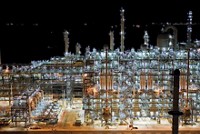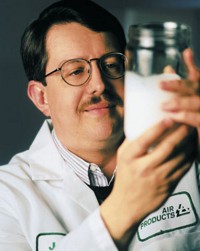Advertisement
Grab your lab coat. Let's get started
Welcome!
Welcome!
Create an account below to get 6 C&EN articles per month, receive newsletters and more - all free.
It seems this is your first time logging in online. Please enter the following information to continue.
As an ACS member you automatically get access to this site. All we need is few more details to create your reading experience.
Not you? Sign in with a different account.
Not you? Sign in with a different account.
ERROR 1
ERROR 1
ERROR 2
ERROR 2
ERROR 2
ERROR 2
ERROR 2
Password and Confirm password must match.
If you have an ACS member number, please enter it here so we can link this account to your membership. (optional)
ERROR 2
ACS values your privacy. By submitting your information, you are gaining access to C&EN and subscribing to our weekly newsletter. We use the information you provide to make your reading experience better, and we will never sell your data to third party members.
Business
Chemical Sector’s Jobless Recovery
A wobbly rebound, high productivity, and pharma mergers prevented employment growth
by Melody M. Bomgardner
July 4, 2011
| A version of this story appeared in
Volume 89, Issue 27
Although 2010 marked the return of demand and earnings for the global chemical industry, there was no corresponding growth in employment. Chemical firms that devoted themselves to running lean during the recession were able to ramp up production without hiring—or rehiring—workers.
In the U.S., a years-long decline in chemical industry employment steepened during the recession years. From 2007 to 2009, the industry lost 57,000 jobs, of which 25,000 were in production, according to the U.S. Department of Labor. In the decade since 2000, the industry lost 196,000 workers, a shrinkage rate of 2.0% per year. The pace of the decline in the chemical industry, however, is slower than the 3.6% annual decrease in employment in the overall manufacturing sector.
COVER STORY
Chemical Sector’s Jobless Recovery
In 2010, the chemical workforce fell by 20,000 jobs or 2.5%, according to the Labor Department. On the output side, however, U.S. chemical shipments rose 11.5% compared with 2009. Of 16 companies tracked by C&EN, Dow Chemical, H.B. Fuller, NewMarket Corp., PPG Industries, and Stepan had more employees in 2010 than in 2007, the peak year of U.S. chemical production.
Download this article complete with online only tables here.
Meanwhile, pharmaceuticals topped most other U.S. industries in laying off workers in 2010. According to outplacement firm Challenger, Gray & Christmas, drugmakers pink-slipped 54,000 employees. Among those workers were roughly 19,000 who were victims of Pfizer’s purchase of Wyeth and 16,000 who were dropped during the combination of Merck & Co. and Schering-Plough.
Outside the chemical industry, high unemployment was a drag on the U.S. economy. Throughout 2010, the unemployment rate stayed above 9.5%, although economists marked June 2009 as the official end of the Great Recession. Workers who did have jobs spent the year worried about losing them, and consumer confidence remained low.
Low confidence in the global recovery was also evident in the hiring rates in Europe, where chemical employment remained flat. Yet the statistics show Europe’s chemical industry was busy in 2010. Each of the four European nations tracked by C&EN posted double-digit increases in chemical shipments. The Netherlands saw the sharpest increase, at 23.7%. The continent’s largest chemical-producing country—Germany—reported a 17.6% increase in value of shipments to $226.5 billion.
The story was similar in Japan, where chemical companies tracked by C&EN employed the same number of workers in 2010 as in 2009, even as production increased 9.0%. In contrast to the long-term trend in the U.S., chemical employment at the Japanese and European firms tracked by C&EN was respectively equal to and slightly higher in 2010 than it was a decade ago.





Join the conversation
Contact the reporter
Submit a Letter to the Editor for publication
Engage with us on Twitter